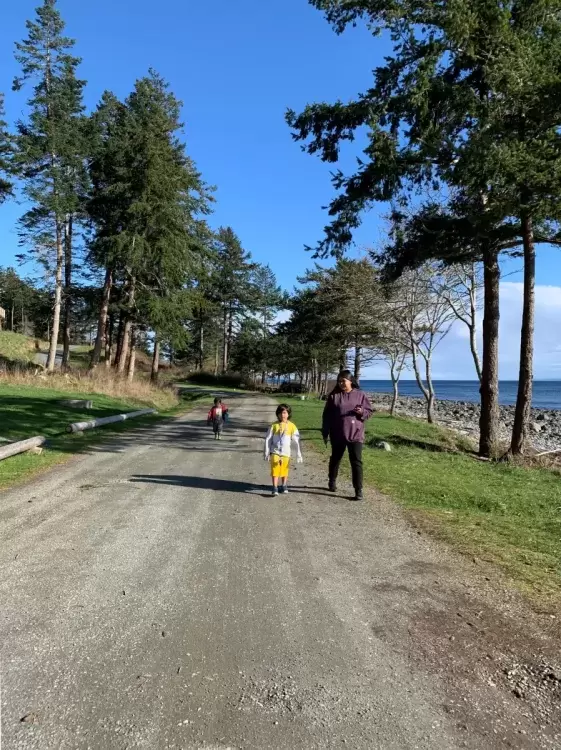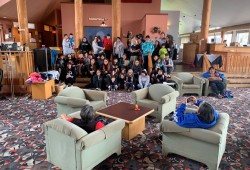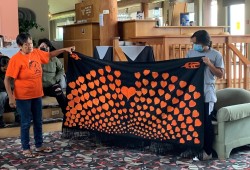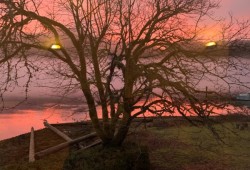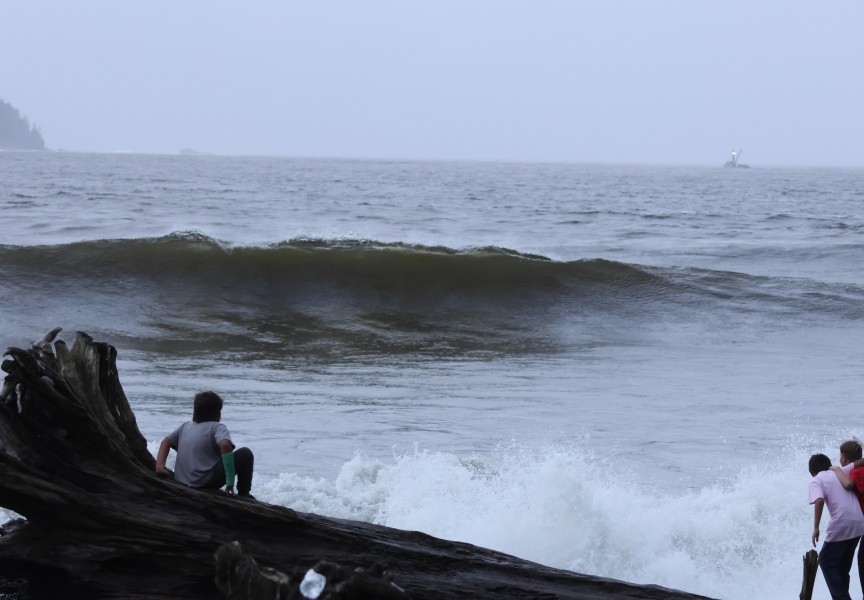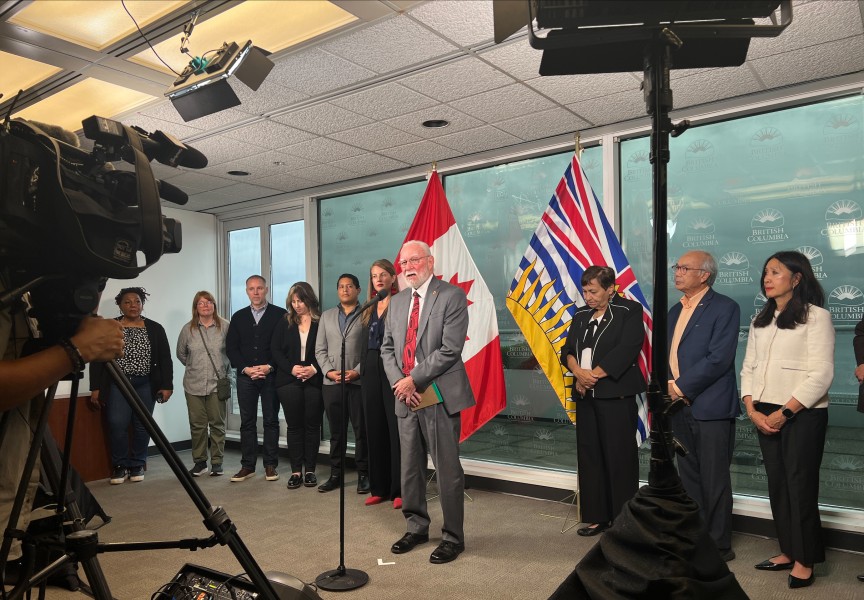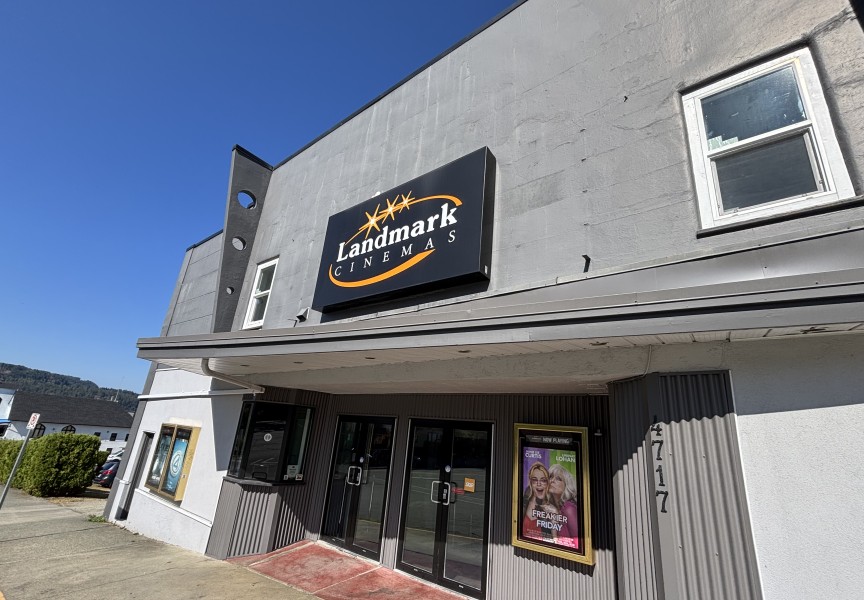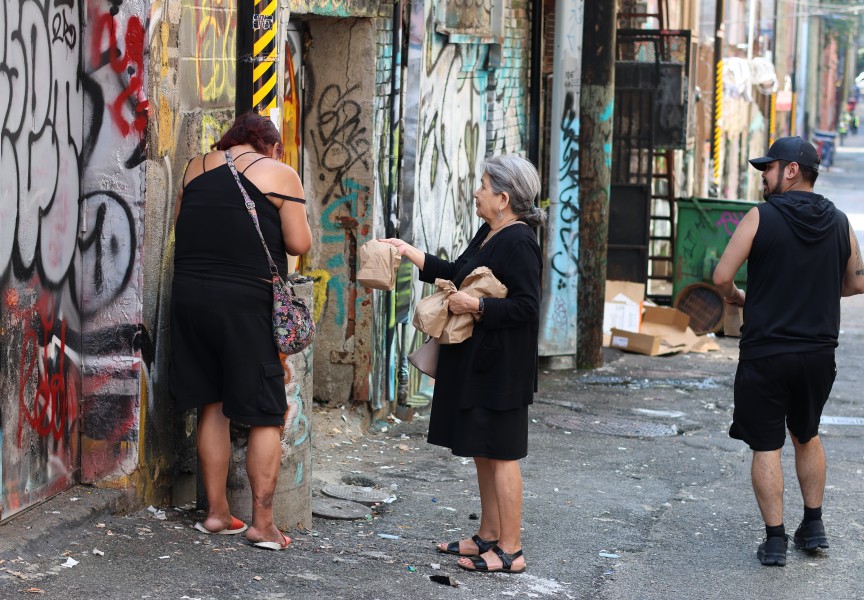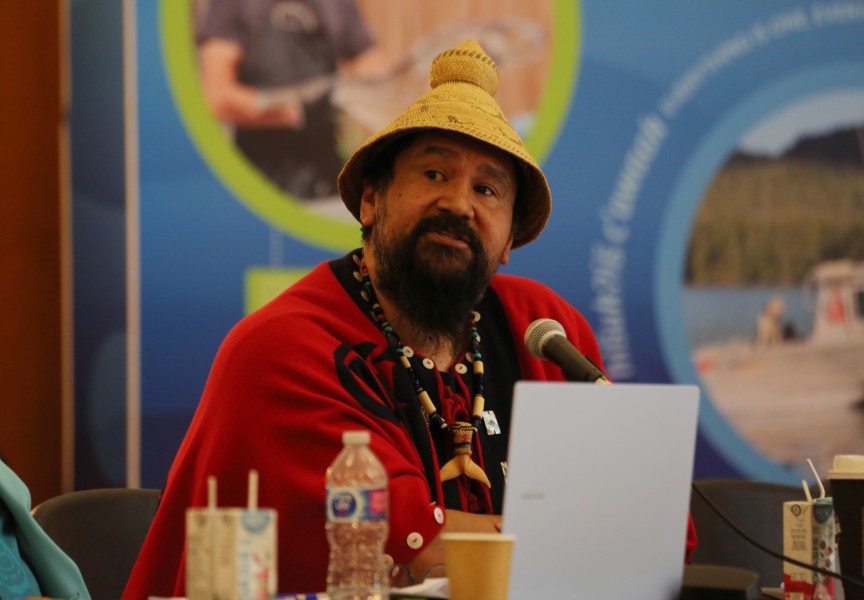Over the past 18 months, the northern Nuu-chah-nulth region has been coming together to participate in a series of land-based trauma treatment programs.
Centered around collective healing from colonization and the intergenerational trauma caused by the residential school system, 196 people have been involved in “Reawaken the Spirit.”
Tammie Myles has been facilitating the project with the help of community liaison workers from the Ka:'yu:'k't'h'/Che:k'tles7et'h', Nuchatlaht, Ehattesaht Chinehkint and Mowachaht/Muchalaht First Nations.
By guiding community members through a series of five-day land-based healing programs, Myles said she hopes participants leave feeling lighter, more open, more confident, and with a commitment to communicate with those around them in a more positive way.
Reflecting on triggers
The programs begin with conversations about the impact of the residential school system, and the legislation that was used to assimilate and colonize Indigenous populations.
It opens the door for participants to look at their own life and how they’ve been harmed by those legacies, said Myles.
“As human beings, we get triggered all of the time,” she said. “But if we can examine and self-reflect on those triggers in a space that's supportive, we can learn to live with them, cope with them and start to see life in a different way.”
The Coast Salish woman started working in addictions when she was in early 20s.
Early on in her career the now 57-year-old said she learned that “we can only take people as far as we have come ourselves.”
“There was lots of personal development,” Myles said. “Lots of personal awareness, lots of processing [my] own history to be able to step into that space to work with other people.”
It was “life altering,” she said.
When you allow pain and trauma to resurface so you can examine it, Myles said you’re able to look at it differently and shed some of its weight.
“People don't want to [relive] pain that they've experienced in their life,” she said. “They think that by not opening it up, they don't have to ever experience it again.”
But if you don’t confront it, it’ll always be there, Myles said.
‘The land is foundational’
The project places a strong emphasis on land-based treatment because “nature is one of our chief healers,” she said.
By removing participants from the “chaos” that can exist within their communities, Myles said they’re able to focus on themselves.
“The land is foundational” to Indigenous identity, the First Nations Health Authority (FNHA), who funded the project, wrote in a report.
Reconnecting to the land allows Indigenous communities to reclaim traditional wellness practices, the FNHA added.
“Through colonization and residential schools, we've really been socially conditioned by a dominant culture that thinks they're superior to us,” said Myles. “Sometimes we give away our own power … we look to Western culture to tell us what we need to do because it's almost like we don't trust ourselves anymore.”
It’s a mindset that needs to be “unlearned,” she said.
“We underestimate the power of our ceremonies and our spiritual connection,” Myles said.
A recent study, Restoring Our Roots: Land-Based Community by and for Indigenous Youth, was published in the International Journal of Indigenous Health and aimed to demonstrate the many ways learning from the land is beneficial for Indigenous youngsters.
Targeted assimilation and land theft are central to the historical and ongoing dissociation of Indigenous people from their traditional connection to the land, read the study.
“It is thus paramount that Indigenous youth be given the opportunities to (re)connect with their cultures in safe, accessible spaces [and] places,” the study concluded.
Cliff Atleo was one of the elders who stepped in to support the healing workshops and engagement sessions.
The Ahousaht man said the experience was “very satisfying” because of the progress he saw in participants' mental and spiritual health.
Through sharing his own life experience as a residential school survivor, along with the importance of connecting to the spirit world, Atleo said he aimed to support participants with new perspective.
“We can't afford to think that we don't need counseling,” he said. “What we can afford to do is assume that we all need counseling and healing.”
The workshops provide participants with “some good tools that are only as good as how well they’re used,” Atleo said.
“If you can generate a positive attitude, positive friends, a positive environment, you attract fun,” he said. “If you hang on to the dark, dark things always hang around.”
‘Hurt people hurt people’
One of the three workshops was specifically designed for elders.
As knowledge keepers and teachers, Myles said “it’s vital that they’ve done their own healing work.”
“We don’t want to bring forward the intergenerational trauma that has happened to us and unknowingly share it with the next generation,” she said. “We need to do our work in order to be able to be solid and move forward to create a healthier next generation. Hurt people hurt people, so we need to deal with our hurt.”
Margaretta James, Mowachaht/Muchalaht First Nation community liaison worker, said the project provided her with a “strong” sense of direction on how to move through her own life.
“The value of the program is being reminded of who you are,” she said.
James’ mother attended residential school, along with all of her aunts and uncles.
The impact manifested through addiction issues within her family, she said.
Before colonization, “life was so simple,” James said.
“The Indigenous way of life was the best,” she said. “We’ll probably never get back to that simplistic way of living, but we can at least know who we are. And show and model for the young ones that are coming after us.”
Myles will be facilitating an additional healing program in September after receiving a project extension and said she recommends that a minimum of six healing programs are offered annually going forward.
“My hope is that people can be more kind, loving, supportive, be open to opportunity, be more innovative, more creative, and see their potential,” she said. “It takes practice, and it takes work – it’s about how much are you willing to invest in yourself to create change.”

